Use Political Covers to Teach Media Literacy
 By Frank W. Baker
By Frank W. Baker
Spring 2016: the election for President of the United State is 7 months away.
Hundreds of millions of dollars have already been spent by candidates who have purchased ad time on television programs in order to reach their “target audiences.” (If you live in any of the primary states, then it’s highly likely that you’ve seen their messages and those produced by the various SuperPACs.)
I have often observed that candidates running for office need the media. (How else will they get name recognition or raise money?) They receive free coverage, for example, when they post something on social media, give a speech, appear on a national TV or radio broadcast, or hold a press conference. Many candidates are also interviewed by the editorial boards of news organizations, which may also generate news.
Recently, The New York Times reported that GOP front runner Donald Trump had received nearly 2 billion dollars in free media. Included in that free media estimate is social media.
Another example of free media occurs when the candidates appear on the covers of national magazines. Perhaps you, or your students, have already seen one or more of these.
(I’ve created this web site where you can locate a large number of Campaign 2016 magazine covers with questions that can be used in instruction.)
When a presidential candidate appears on a magazine cover, it may be the culmination of months of negotiation between the news magazine and the candidate. Candidates don’t have final control over how they will be portrayed on the cover. In fact, some cover images may not be complimentary to a candidate. But asking students to conduct a “close reading” of any one of the dozens of the current event or pop culture magazine covers is a worthwhile visual and media literacy exercise.
Messages Embedded in the Images
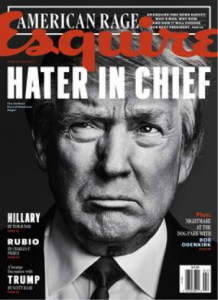
Now consider, TIME magazine’s recent cover images of Democrats Hillary Clinton and Bernie Sanders:
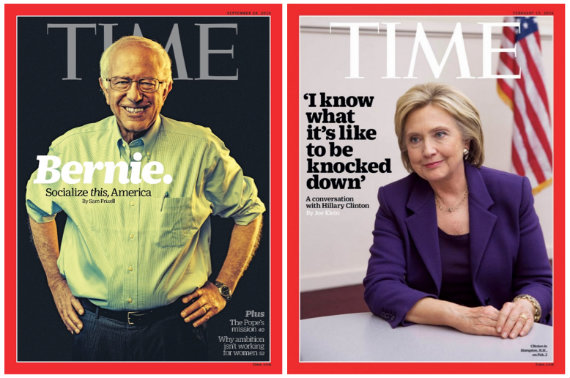
Now consider how TIME chose to portray former Secretary of State Hillary Clinton. She is seated, as opposed to Senator Sanders, who is standing. Why might that be? On first read, did you notice the American flag in the upper right hand corner? Instead of a large font headline (like Bernie in white letters) they’ve used a quote and it’s in black. Why do you think TIME used that quote on the cover? What previous time(s) do you think she is referring to in the quote?
What do you notice about Mrs. Clinton’s body language and expression? Would your students describe this image as warming and welcoming? While Bernie is smiling and looking at “us,” she is looking off camera. Who might she be looking at?
The Impact of Illustrations
Not all magazine covers use photographs. Many publications employ illustrators. Here are a couple from recent months. Notice that artists can portray people and create events that a photo might never be able to capture.
Intended for Young Audiences
Consider these examples (below) from two in-school publications. The New York Times/Scholastic’s UPFRONT magazine (below left) is primarily aimed at a high school audience. The headline “The Race for The White House” makes it clear which sport is represented and the illustration supports the headline. (For a long time, much of politics has been compared to sports, with the phrase “horse race” still very popular with broadcasters and journalists.)
Junior Scholastic (below right, published by The Scholastic company) is aimed at a middle school audience. This cover is considered a montage. It combines photos with illustrations and other images to amplify social media’s role in the current election process. Can your students identify the candidates (by name) as well as each of the symbols on this cover?
Creating Covers in Class
1. Introduce students to the idea of candidate cover story images. You can find many such cover images on my website or by browsing Google Images.
2. Accumulate a variety of magazines in advance – news, business, lifestyle, entertainment. Look for magazines that might feature a presidential candidate on the cover. Working individually or in groups, students will select or be assigned a magazine. Their task will be to create a cover featuring one of the 2016 candidates, as they imagine the magazine might do it (so it’s best not to bring in samples that already have candidates featured).
3. Students should first research the primary demographic of their magazine. Who is the magazine trying to appeal to? I often tell students to flip through and make a list of all of the ads in their assigned publication. A recent issue of TIME magazine, for example, carried full page ads for several prescription drugs, PBS’s Downton Abbey, and auto insurance. Can you guess the demographic TIME is trying to reach?
4. 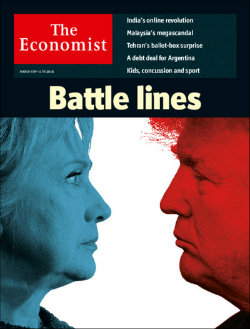
5. There are many free resources for creating your own magazine cover. Simply searching on Google will reveal many. You may wish to collaborate with your school library media specialist who could download your chosen software on computers in the library or tech lab. This web site offers a few examples, many of which are free. Here’s another resource for magazine cover production.
6. Now that your students have located an appropriate image and have uploaded it to the software, they must consider the words, font size and color, and all of the other information that will make their cover appealing and indicative of the magazine’s target audiences.
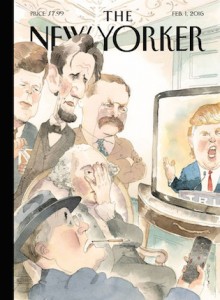
8. Organize a discussion. Show covers and let students talk about why they made the choices that they did.
Learning Opportunities Loom Ahead
Between now and election day in November, we’re going to see and hear from the candidates both in free and paid media. Applying some critical thinking and visual and media literacy skills to these images is increasingly important. Engaging your students in creating a magazine cover also introduces them to production skills that are necessary and valued as 21st century career and college ready skills.
Cover image credit: The American Prospect, Spring 2016 at The Media Literacy Clearinghouse
_____________
Frank W. Baker’s most recent book is “Media Literacy In The K12 Classroom” (ISTE, 2012). He also authored Political Campaigns & Political Advertisements: A Media Literacy Guide, and has conducted hundreds of workshops for teachers and students around the United States. He helped write teaching standards for both English Language Arts and Visual/Performing Arts in his home state of South Carolina. He serves as a consultant to the Writing Improvement Network and to the Academy of Motion Picture Arts & Sciences. He maintains The Media Literacy Clearinghouse and tweets about media and media issues @fbaker.

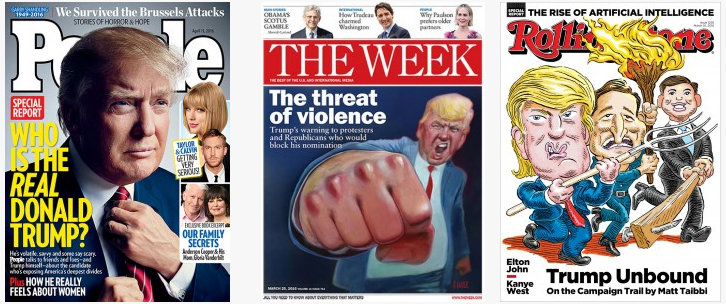
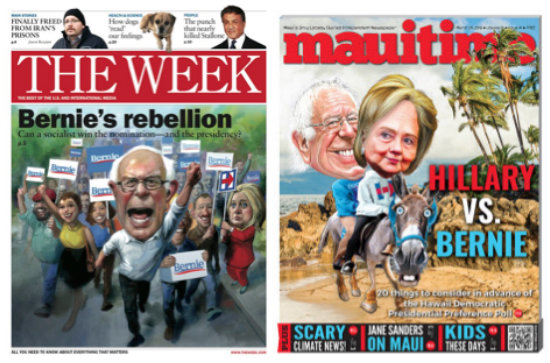
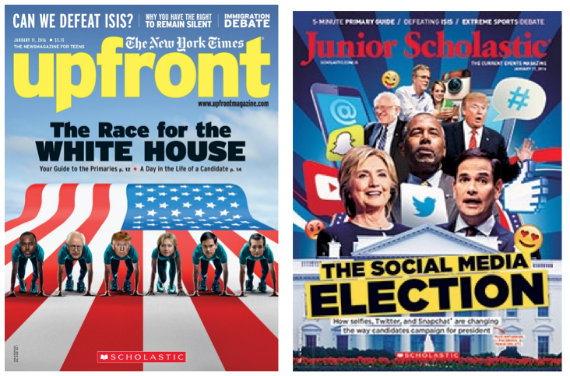

































Nicely done!